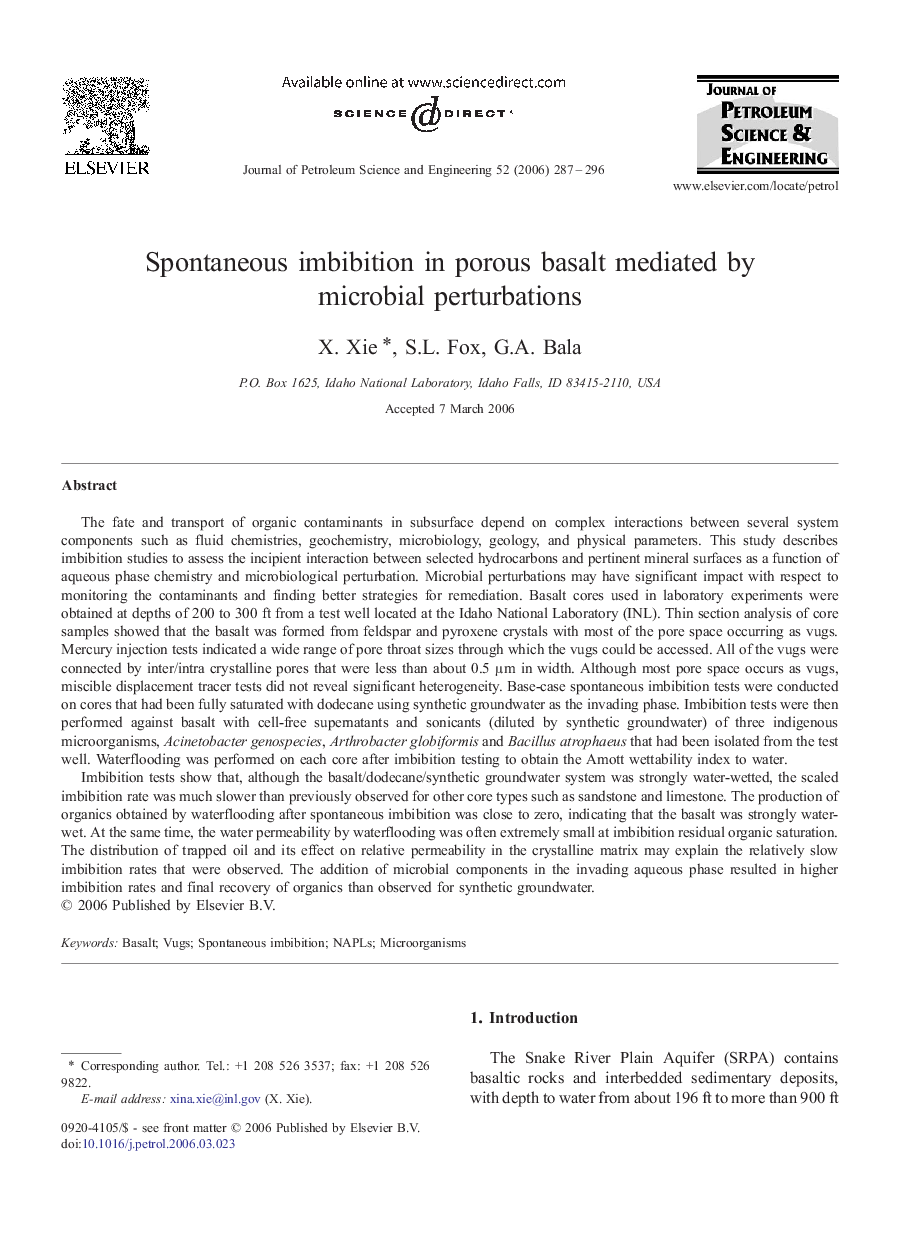| کد مقاله | کد نشریه | سال انتشار | مقاله انگلیسی | نسخه تمام متن |
|---|---|---|---|---|
| 1756478 | 1522900 | 2006 | 10 صفحه PDF | دانلود رایگان |

The fate and transport of organic contaminants in subsurface depend on complex interactions between several system components such as fluid chemistries, geochemistry, microbiology, geology, and physical parameters. This study describes imbibition studies to assess the incipient interaction between selected hydrocarbons and pertinent mineral surfaces as a function of aqueous phase chemistry and microbiological perturbation. Microbial perturbations may have significant impact with respect to monitoring the contaminants and finding better strategies for remediation. Basalt cores used in laboratory experiments were obtained at depths of 200 to 300 ft from a test well located at the Idaho National Laboratory (INL). Thin section analysis of core samples showed that the basalt was formed from feldspar and pyroxene crystals with most of the pore space occurring as vugs. Mercury injection tests indicated a wide range of pore throat sizes through which the vugs could be accessed. All of the vugs were connected by inter/intra crystalline pores that were less than about 0.5 μm in width. Although most pore space occurs as vugs, miscible displacement tracer tests did not reveal significant heterogeneity. Base-case spontaneous imbibition tests were conducted on cores that had been fully saturated with dodecane using synthetic groundwater as the invading phase. Imbibition tests were then performed against basalt with cell-free supernatants and sonicants (diluted by synthetic groundwater) of three indigenous microorganisms, Acinetobacter genospecies, Arthrobacter globiformis and Bacillus atrophaeus that had been isolated from the test well. Waterflooding was performed on each core after imbibition testing to obtain the Amott wettability index to water.Imbibition tests show that, although the basalt/dodecane/synthetic groundwater system was strongly water-wetted, the scaled imbibition rate was much slower than previously observed for other core types such as sandstone and limestone. The production of organics obtained by waterflooding after spontaneous imbibition was close to zero, indicating that the basalt was strongly water-wet. At the same time, the water permeability by waterflooding was often extremely small at imbibition residual organic saturation. The distribution of trapped oil and its effect on relative permeability in the crystalline matrix may explain the relatively slow imbibition rates that were observed. The addition of microbial components in the invading aqueous phase resulted in higher imbibition rates and final recovery of organics than observed for synthetic groundwater.
Journal: Journal of Petroleum Science and Engineering - Volume 52, Issues 1–4, June 2006, Pages 287–296